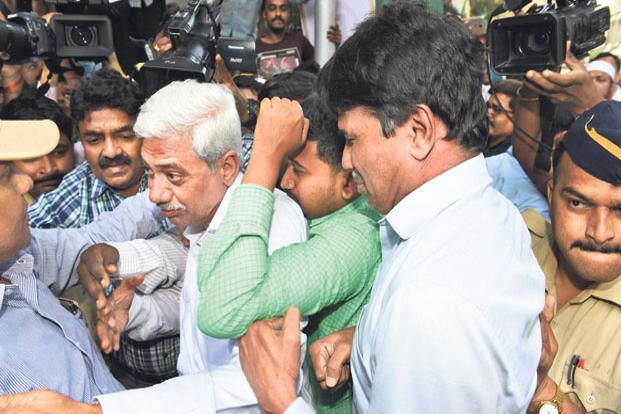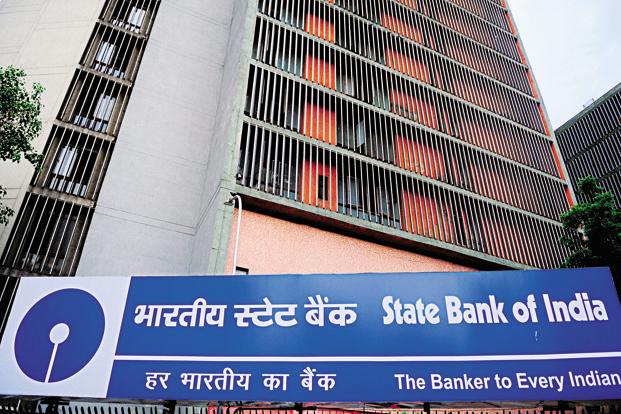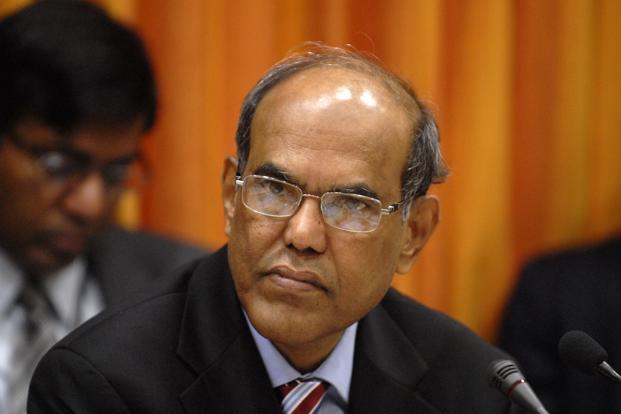Just two employees of a bank branch can empty its cash vault. In most public sector bank branches in India, a pair of keys of the strong room is kept with the cash officer and the accountant in the branch; if both collude, they can empty the vault.
To topple a bank, at least three persons need to conspire—the so called maker, checker and verifier or authorizer of SWIFT messages. Banks across the world use SWIFT, or Society for Worldwide Interbank Financial Telecommunications, a messaging network for securely transmitting information and instructions for all financial transactions through a standardized system of codes. The maker keys in the message in the system, the checker checks it and, at the third stage, the verifier transmits it after he is convinced of its genuineness.
Even three persons aren’t enough to topple a bank. This is because after the SWIFT message is sent to an overseas bank for a financial transaction, the bank which receives it and transfers the money (to the overseas Nostro bank account of the exporter or the importer), it sends a SWIFT message back confirming the creation of the loan. The person who receives this message is a different person; not any of the three—maker, checker or verifier. The message comes to a secured room and gets printed on a separate printer; everybody does not have access to this secured room.
If indeed Gokulnath Shetty, a retired deputy manager of Punjab National Bank’s (PNB’s) foreign exchange department at the Brady House in Fort, Mumbai, is the only villain in the $1.77 billion (around Rs11,397 crore today) fraud, then he had played the role of all four—maker, checker, verifier and the receiver of the message confirming the creation of a loan. Clearly, the control system in India’s second largest government-owned bank by assets has gone to the dogs. And, if this is not the case, there must be many more executives at different levels across various departments of PNB who perpetrated the fraud for more than seven years.
Stock market filings
What exactly happened? On 5 February, PNB informed India’s stock exchanges of a Rs280 crore fraud. The bank followed it up on 14 February, informing the stock exchanges once again that it had discovered fraudulent transactions, dating back to 2011, “for the benefit of a few select account holders”. The note did not name designer jeweller Nirav Modi, but media got to know that some of the bank’s employees at a Mumbai branch allegedly issued letters of undertakings, or LoUs, to Modi’s companies, which enabled them to raise money from international branches of other Indian banks in the form of buyer’s credit. The PNB note said “these transactions are contingent in nature and liability arising out of these on the bank shall be decided based on the law and genuineness of underlying transactions.” The money involved is “$1,771.69 million”.
The very next day, in yet another detailed clarification to the stock exchanges, PNB said that when Modi’s employees approached the Mumbai branch on 16 January seeking an LoU, the bank asked for 100% cash margin; but they contested this, claiming the group had been enjoying the facility for years without any cash margin. That led to the discovery of the fraud—issuances of LoUs through SWIFT without any official sanction.
By 25 January, the first devolvement of a set of LoUs occurred, leading to $44.2 million liability for PNB. Subsequently, more LoUs started devolving on PNB. Apart from Modi group firms, the involvement of Gitanjali group firms of Mehul Choksi (Modi’s uncle) surfaced. By 12 February, PNB discovered some Rs11,304.02 crore of unauthorized issuances of LoUs and other trade finance instruments to the Modi firms, Gitanjali group companies and Chandri Paper and Allied Products Pvt. Ltd, owned by Aditya Ishwardas Rasiwasia and Ishwardas Agarwal.
What is an LoU?
What is an LoU? It’s an explicit undertaking offered by a bank to another bank on behalf of its customer, who is importing goods from overseas. Backed by the LoU, the overseas bank gives the so-called buyer’s credit to the importer.
The earlier avatar of LoU was LoC, or a letter of comfort—issued by the importer’s bank for a buyer’s credit (to the extent of the value of the invoice for goods being imported). In the LoC regime, the importer was supposed to pay to the overseas bank and, in case of a default by the importer in paying the debt, the LoC issuing bank would step in. In other words, unlike LoC, LoU is unambiguous on the issuing bank’s responsibility—it’s nothing but a direct exposure of the importer’s bank to the overseas banks which are extending the buyer’s credit.
Buyer’s credit is a short-term credit available to a buyer (importer) from overseas lenders such as banks and other financial institutions for goods being imported. The overseas banks usually lend the importer on the basis of an LoU issued by the importer’s bank. The bank which gives the LoU earns a fee, typically 0.2-0.25% of the amount; the bank which gives the buyer’s credit earns interest (Libor, or London Interbank offered rate, plus a spread, depending on the profile of the customer); and the importer gets a cheap line of foreign credit.
The maturity of an LoU could be between 30 days and one year, depending on the operating cycle of the importer. For instance, a diamond merchant may need two-to-three months’ time to cut, polish and export the raw diamond imported from South Africa, while an entity that imports crude palm oil from Malaysia may need less time for converting it to RBD palm oil through degumming, bleaching and deodourizing. In Reserve Bank of India’s (RBI’s) lexicon, such facilities are short-term external commercial borrowing and they cannot be rolled over. The idea behind having such a scheme is to enable an importer to access low-cost foreign currency funds overseas.
Under RBI guidelines, buyer’s credit for import of platinum, palladium, rhodium and silver and rough, cut and polished diamonds, precious and semi-precious stones should not exceed 90 days from the date of shipment. The list, however, does not include pearls. I am not aware what exactly Modi’s companies were importing. Media reports suggest Modi was importing cultured pearls.
The beginning
How did the fraud happen? Let me try to reconstruct the story from my conversations with bankers, central bankers, foreign exchange dealers and trade finance experts.
Modi wanted to import pearls and diamonds, design exquisite world-class jewellery and sell them. He needed money to buy the pearls and diamonds. He did not want to opt for a rupee loan, and rightly so as it is expensive and there is foreign currency risk. He wanted foreign currency loan. That’s cheap. Besides, he had a natural hedge against currency fluctuations as he was earning in foreign currency by exporting jewellery.
Till now, the story is fine. The twist comes when he decided to take bank loans without having any loan account and other attendant paraphernalia such as sanctioned limits, collaterals, etc. To circumvent all these, he arranged a guarantee from PNB in the form of LoU for cheap short-term foreign currency loans meant for importers. Ideally, the LoU-issuing bank asks for a margin, which could be as much as 100% or even more. Why would an importer offer such a high margin? It would, because this is typically kept with the LoU-issuing bank in the form of a fixed deposit, the return from which is far higher than the cost of the foreign currency loan. Simply put, an importer can arbitrage between high domestic deposit rates and low foreign credit rate. For some reason, PNB, it seems, did not ask for margin. And, this is the beginning of the $1.77 billion fraud that shook the Indian banking system last week.
MT 799
So, one fine morning in 2011, a SWIFT message (code: MT 799) was sent from PNB’s Mumbai branch to some of the Indian banks overseas offering LoUs, committing to pay them the principal plus interest on behalf of Modi companies. Without batting an eyelid, a few Indian banks extended buyer’s credit. We presume the money flowed into PNB’s Nostro account. A bank keeps a Nostro account in foreign currency in another bank overseas for use of foreign exchange and trade transactions.
PNB debited the money by paying to the exporter, the entity which was selling diamonds to Modi. Theoretically, Modi should have sold the polished diamonds and jewellery and paid back PNB on every due date for each LoU, and PNB would have paid back the banks overseas for their buyer’s credit. Had this been the case, there would not have been any fraud. What might have happened (I don’t know for sure at this point) is Modi never paid back PNB! He used the money for other purposes—creating assets overseas or playing in the market or probably buying books from Amazon and enjoying a good life, reading poetry and listening to music.
How could he and others continue this facility for seven years without paying any money? Well, instead of paying his own money, he probably asked PNB (read Gokulnath Shetty) to open another LoU, which could cover the principal plus interest of the previous LoU. Backed by new LoUs, he would get fresh and higher buyer’s credit, which would enable him to clear the previous loans and the chain continued.
Kite flying
In banking parlance, such a practice is called kiting or kite flying. When people use one or more credit cards to withdraw cash at an ATM and pay dues on another credit card, they do the same thing. This way, Modi (and Choksi) may have spawned hundreds of LoUs (investigative agencies peg the figure at 293) and PNB’s liability to the issuers of buyer’s credit ballooned. It’s a sort of ponzi scheme which chit funds run—they continue to pay high interest rates to depositors till the flow of new money continues and once the flow stops, their operations come to a halt. Here, too, Modi kept on opening LoUs to repay old facilities; the game came to a sudden halt when Shetty’s successor at PNB’s Fort branch refused to open a new LoU without a margin.
Of course, at this point, this is a conjecture. If this has not happened, we need to believe that Modi was doing good business till January this year when he had no money to pay back PNB.
Shetty, who had been at PNB’s foreign exchange department in Mumbai since 31 March 2010, and a few of his colleagues were using SWIFT messages for the LoUs and none else in the bank seemed to be aware of this. This is because such transactions never showed up in the core banking system of the bank. When Shetty retired in 2017 and his successor refused to entertain Modi without any margin, Modi claimed that he had all along been enjoying the facility. However, the gentleman could not trace the past transactions in the system, and the cat came out of the bag.
There would not have been any problem if PNB had securities or other collaterals to back its LoUs as the bank would have sold the securities /collaterals and paid the banks overseas. This has not happened because Modi never enjoyed any credit facility. He probably just had a current account with the bank, and Shetty and company were entertaining him.
Removing paper trail
The question is how Shetty could remain undetected so long. Most, including PNB, say he removed the paper trail of messages. The unauthorized messages could not be detected as the SWIFT system in PNB is not integrated with its core banking solution or CBS—a software for recording transactions, storing customer information, calculating interest and completing the process of passing entries in a single database. In fact, this is the case with most public sector banks in India which roughly have 70% market share of assets. As the system is stand-alone, no confirmation from the CBS or any other system that originates the transaction is received.
Before SWIFT, Telex was the only means of message confirmation for global funds transfer. It was hampered by low speed and security concerns. Telex senders had to describe every transaction in sentences which were then interpreted and executed by the receiver. This led to many human errors. SWIFT system was formed in 1974 when seven major international banks formed a cooperative society to operate a global network to transfer financial messages in a secure and timely manner. For any cross-border financial transaction, SWIFT is the only secured messaging platform available and acceptable to all banks worldwide.
Those who understand banking technology well, including a former deputy governor of RBI, say integrating SWIFT with CBS is no big deal. Of course, it has a cost but that’s definitely smaller than a $1.77 billion fraud. In fact, some of the Indian private banks have already integrated their CBS with SWIFT. Over the weekend, I checked with Yes Bank Ltd, Axis Bank Ltd, HDFC Bank Ltd and ICICI Bank Ltd and in all four, SWIFT is an integral part of CBS. In State Bank of India, too, the system is integrated. Many Indian banks also run centralized trade finance centres. Integration of SWIFT with CBS will mitigate risks to a large extent even though it may not eliminate risks entirely.
Key questions
It will take a while for the dust to settle on this case, but we need to look for answers to a few questions without losing time:
## How long will most public sector banks refuse to integrate SWIFT with their CBS? Considering the vulnerability of a stand-alone SWIFT, we should be happy that there aren’t too many frauds happening in trade finance.
## Indian banks overseas offered buyer’s credit by remitting funds through inter-bank transfer in the Nostro account of PNB. How could PNB’s CBS not catch such fund transfers?
## As a standard banking practice, Nostro reconciliation for each entry (credit and debit) is done by the treasury back office of a bank with mirror entry in CBS. Why were funds pertaining to the buyer’s credit loan routed through PNB’s Nostro account not reconciled for seven years? The SWIFT entries might have been generated without the knowledge of the senior management, but how could the fund entries—payments of principal and interest for seven years—in the Nostro account in PNB remain undetected?
## Overseas lenders sent loan confirmation to PNB via authenticated SWIFT, post disbursement of buyer’s credit. On receipt of such notification from overseas lenders, why was reconciliation not done with CBS to cross-check the loan details and book the actual liability for principal and interest?
## Modi continued to pay PNB till January 2018 and the lenders had received these funds from PNB. What was the basis of such repayments for PNB if buyer’s credit did not exist in their CBS? How were these Nostro entries reconciled?
## Finally, RBI is very particular in keeping a tab on all transactions in banks’ Nostro accounts and it always insists on timely reconciliation of such accounts. How could the rapid rise in transactions in PNB’s Nostro account escape the regulator’s eye?
I understand RBI sent a note to all banks in the first week of February, asking them to reconcile all Nostro accounts.
Can a deputy manager alone create a $1.77 billion potential hole in a large bank’s balance sheet? For PNB, it has been a multi-layered failure, accompanied by complicity of its executives at different levels.
Concurrent auditors in bank branches are assigned the job of transaction verification. There could be delay, but I wonder how the concurrent auditors failed in tracing out the full chain. Ditto about the statutory auditors. They are supposed to check customer-wise transaction register, along with sanctions /approvals for authenticating the true state of the books of accounts and establish the amount of bank’s contingent liabilities on the date of book closure. Similarly, the internal auditors are expected to verify client files, outstanding transactions, approvals and transaction registers. Besides, RBI auditors conduct the annual financial review.
For the record, PNB’s Shetty will always be compared with R. Sitaraman, a small-time officer in State Bank of India’s treasury department in Mumbai who handheld Harshad Mehta into the coffers of India’s largest lender leading to the Rs4,999 crore 1992 stock market scam.
Post script
The PNB episode will probably provoke the Indian banking system to take a close look at funding the bullion sector, not known for transparency. Many firms, I am told, take cheap buyer’s credit and use the money to earn interest keeping it overseas in the form of deposits with banks. Many a time, the quality of import and the genuineness of the bills are questionable. Most importantly, there’s often an incestuous relationship between the importers and the exporters—they come from the same stable. This could potentially lead to money laundering.
The Indian banking system’s exposure to the gems and jewellery segment was to the tune of Rs69,000 crore in December 2017, less than 1% of the Rs82 trillion total bank credit.



